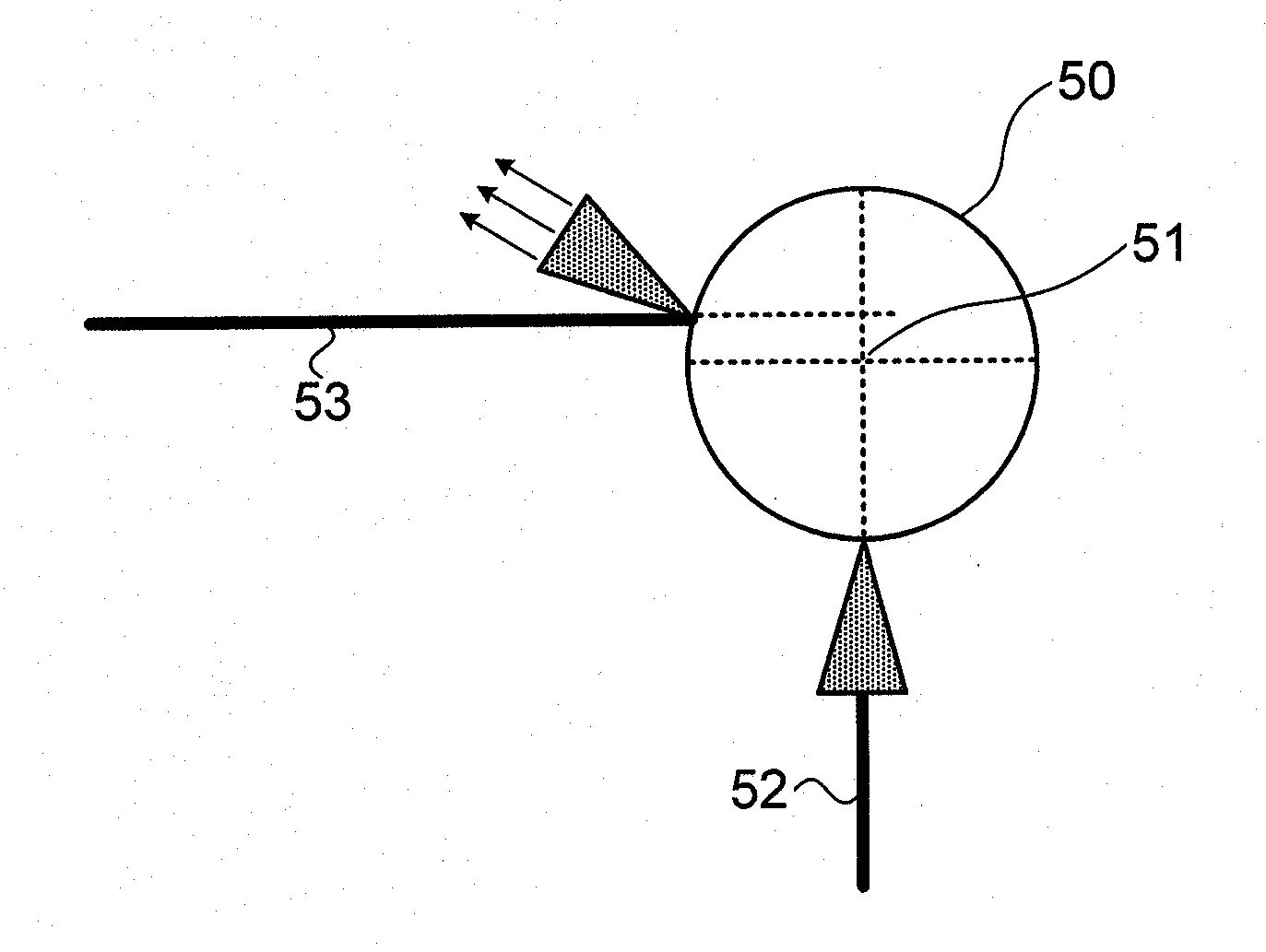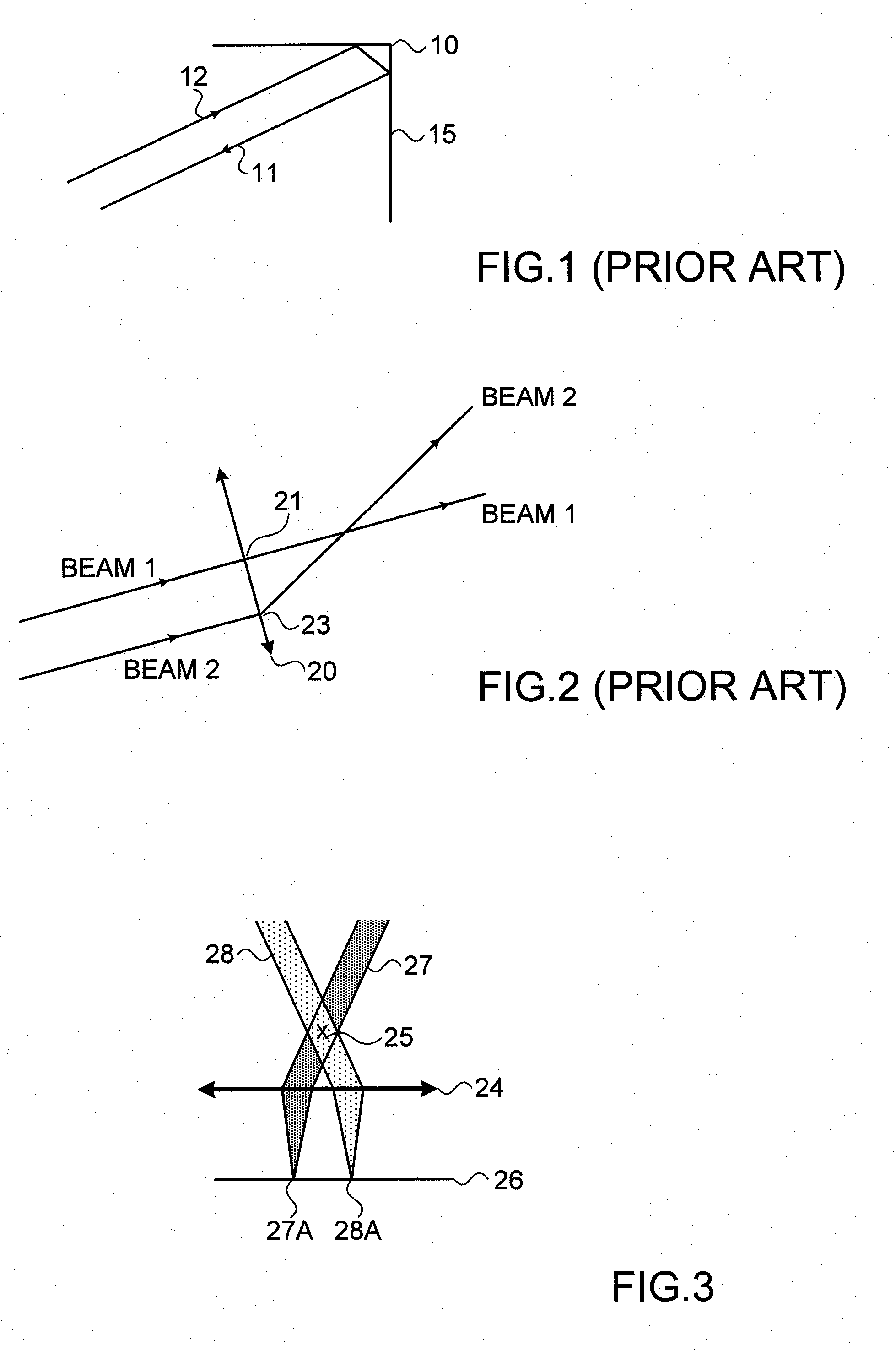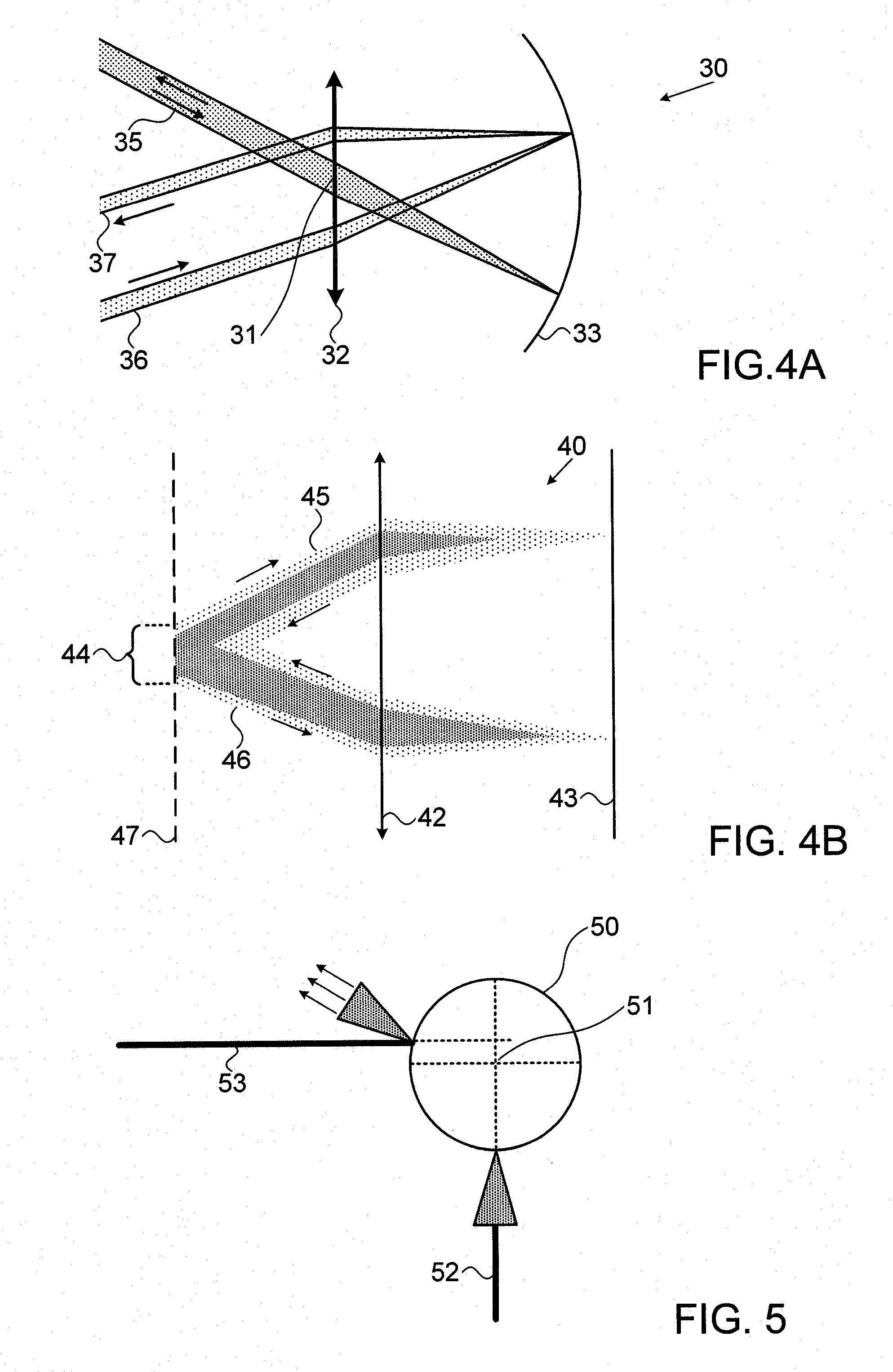Spatially distributed laser resonator
a laser resonator and spatially distributed technology, applied in the direction of optical resonator shape and construction, electromagnetic transmission, transmission, etc., can solve the problems of beam propagation, field of view, components of the laser system might not have the optimum or the required size or field of view
- Summary
- Abstract
- Description
- Claims
- Application Information
AI Technical Summary
Benefits of technology
Problems solved by technology
Method used
Image
Examples
Embodiment Construction
[0085]Reference is first made to FIG. 3, which is provided to illustrate one way in which pupils, or pupil planes and pupil imaging can be visualized, in order to clarify graphically the explanations thereof given in the Summary section of this disclosure. In FIG. 3, a lens 24 is positioned in space. All collimated beams passing through the pupil 25 form an image spot on the image plane 26. For example collimated beam 27 will be focused on point 27a on the imaging plane, while collimated beam 28 will form a focused image spot 28a on imaging plane 26.
[0086]If the system would be designed or set up to handle uncollimated beams with a certain radius of curvature, the imaging plane would move in space, but would still exist. The imaging plane is not necessarily flat. In this application the area in the vicinity of the pupil having a width essentially similar or slightly larger than the beam width, is termed “the pupil”, and the plane at which the beams are focused the “imaging plane”.
[0...
PUM
 Login to View More
Login to View More Abstract
Description
Claims
Application Information
 Login to View More
Login to View More - R&D
- Intellectual Property
- Life Sciences
- Materials
- Tech Scout
- Unparalleled Data Quality
- Higher Quality Content
- 60% Fewer Hallucinations
Browse by: Latest US Patents, China's latest patents, Technical Efficacy Thesaurus, Application Domain, Technology Topic, Popular Technical Reports.
© 2025 PatSnap. All rights reserved.Legal|Privacy policy|Modern Slavery Act Transparency Statement|Sitemap|About US| Contact US: help@patsnap.com



